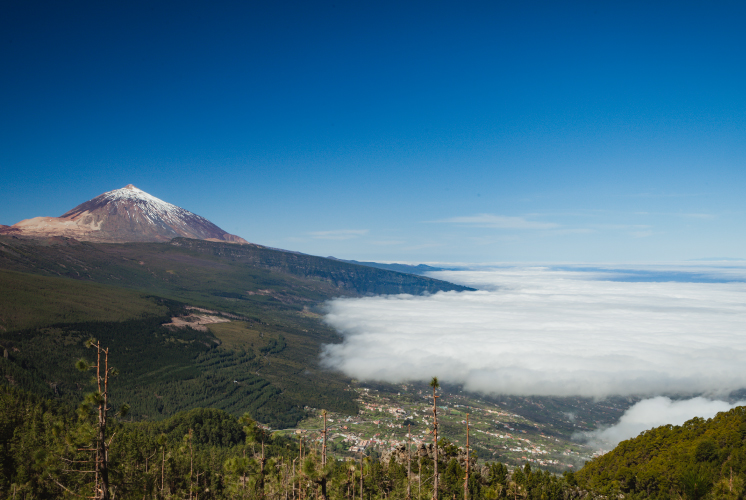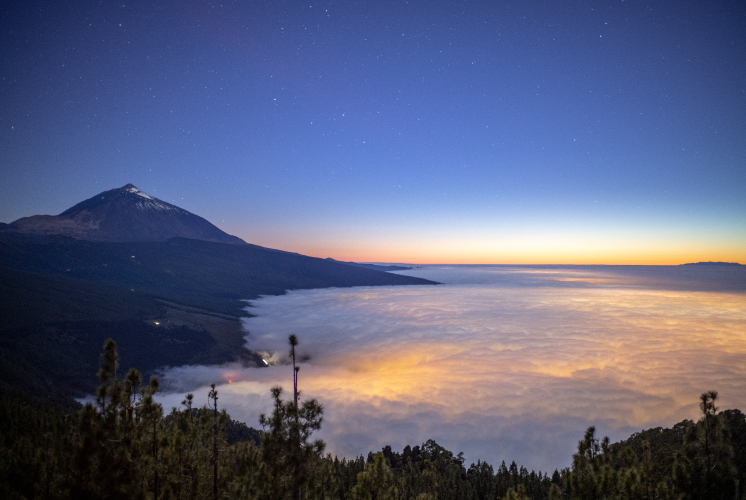Mount Teide serenely admires the changes that life draws around its dominion.


Volcano and fire
Achamán y el demonio
Ahuyentando a Guayota
Cruces y Fuegos de Mayo
Teide's children, the inhabitants of Los Realejos
The abrupt terrain, high and steep in Los Realejos, is not a limiting factor for its inhabitants’ determination. Over volcanic rock, and under the shade of the forest’s crown, they plough the land with such tenacity, that the most varied plantations of cereals, vegetables, root vegetables and fruits grow from it.
The colour green dominates the hilltop and so does the marine thyme shrub on the coast. Exotic flowers in greenhouses compete against wild flowers, which stand out for their fragrance, in gardens and footpaths. Thermophile forests coexist with Laurisilva trees on imposing slopes, like lookouts, which slope down to the town’s five coves. It is there where the undisturbed lagarto (lizard) tizón lives, and it is there where the pardelas (shearwater birds) hide to build their nests, in the same place where one of the most ancient festivals of Los Realejos is born: Las Cruces y Fuegos de Mayo.
